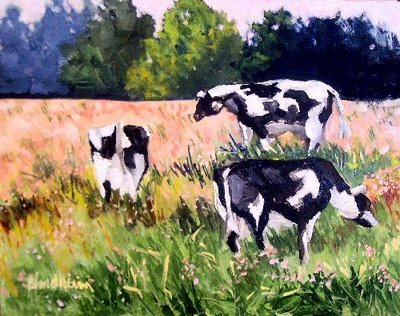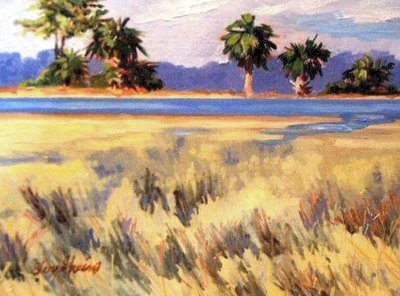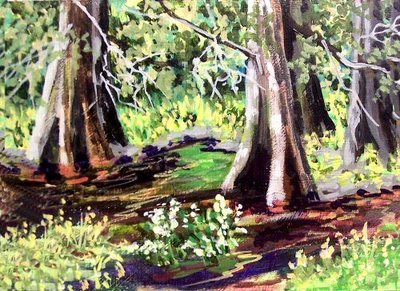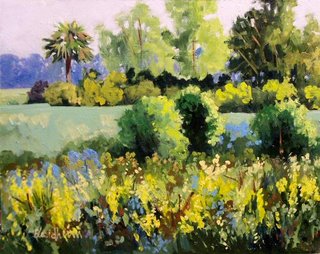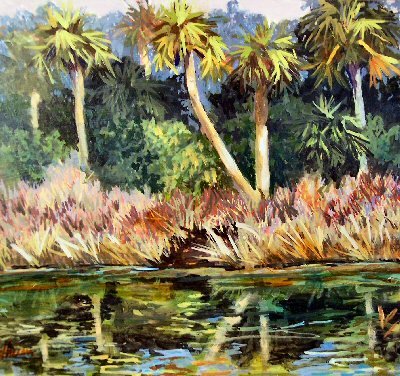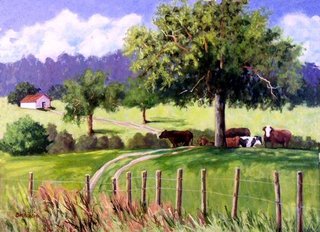
10x10 inches
acrylic on gallery wrap canvas
$550.00
Painter's TipTaking Workshops
Studying with a professional artist can jump start your career or your hobby. Finding the right teacher for you means thinking about what you want from a career coach or workshop teacher.
Think about your comfort zone and how you best learn. If you learn by watching demos and hearing lectures, watching slides and so forth, then you will need to study with someone who likes to spend most of their time lecturing and painting.
If you learn by doing, you will need a teacher who actively involves the student in the learning experience by allowing them to participate more. That means fewer demos and lectures and more painting with student exercises and problem solving on the student's part. That includes more exchange of ideas between student and teacher.
I am definitely a "student participation" teacher. I like to have total student involvement in the painting process. I like to push a student beyond the boundaries they have set for themselves. I don't do slide shows or lectures. I do short demos to illustrate my points but never do finished paintings. I want my students to be painting as much as possible. We have question and answer sessions each day on the lunch break and critiques of work at days end.
Research your workshop teacher's style before you sign up so you won't be disappointed.
Ask yourself:
Why do I want to take a workshop?
What teaching style makes me comfortable?
Do I want to be actively engaged in discussion about art and painting myself, or would I rather watch someone else paint, hear lectures and watch slides?
Do I have realistic expectations or do I expect to do perfect finished paintings right away? If you expect to do excellent paintings at a workshop you are missing the point. A workshop is a learning situation, doing things you are unfamiliar with.
Am I at the right level of painting for this workshop?
Can I go in with an open mind ready to try new techniques and approaches to painting?
Finding the right fit with an instructor is so important for the success of your workshop. Take the time to research. Check with an instructor and ask specific questions.
You should expect to receive supply lists and receipts for your deposits. You should also expect to send a non-refundable deposit for the Workshop of about 25-33% of the cost. A good teacher will invest a great deal of time in preparation for a workshop and should be compensated for that whether you drop out or not.
You should also expect good communication from instuctors to answer your questions prior to the event. if you have difficulty communicating or have bad vibes about the instructor, it may mean that they are unorganized or unwilling to put in a great deal of effort to assure a good learning experience for you. Unfortunately, there are very good painters who make poor teachers. They expect to be payed for little work except demonstrating.
Do your homework to assure an excellent experience.
